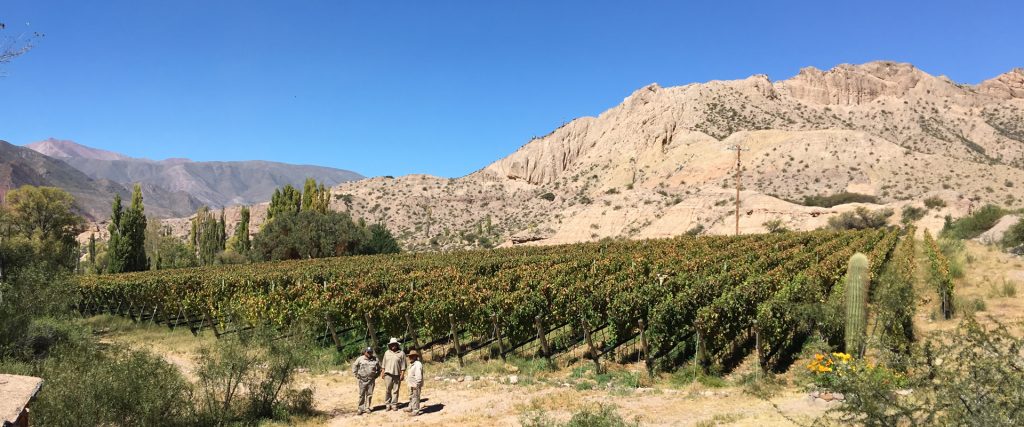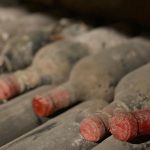How much do you know about Quebrada de Humahuaca wines?
Argentina is a country of extremes. From the Puna desert to the forests of Patagonia, the Mendoza Andes to the Sierras of Córdoba, the wines made from the vines that grow there reflect these compelling, unique landscapes. And this isn’t lost on wine lovers looking for new experiences.
But even amid this rich array of landscapes, the northwest of Argentina stands out. No other region on the globe plays host to vines grown at heights between 1700 and 3100 metres above sea level surrounded by the lunar landscape of the Calchaquí Valley. But since the early 2000s, even those stunning peaks and valleys have been rivalled by the dramatically remote vineyards of the Quebrada de Humahuaca, in Jujuy, where a cluster of intrepid producers have headed up the mountain to produce wine right on the Tropic of Capricorn, at 23° South, to make some extraordinary wines.
A unique terroir
The Province of Jujuy is located to the far north of Argentina and wine has been made there for centuries. Its oldest vineyards are located in the Templados Valleys, where seven producers grow grapes for table wine.
But a more surprising chapter in the history of Jujeño winemaking began 2003 in Maimará (2400 masl) when Fernando Dupont opened the first winery in the Quebrada de Humahuaca, one of the most famous tourist destinations in Argentina, which was declared a Heritage Site by UNESCO, also in 2003.
Since then, the Andean valley framed by two mountain ranges with peaks as high as 4500 metres has become one of the most exotic winemaking regions in the world with 60 hectares of vines set at between 2200 and 3330 masl.
The wine route in Quebrada stretches about 50 miles, running through the towns of Tumbaya, Pumamarca, Maimará, Huichaira, Tilcara, Huacalera, Yacoraite, Perchel and Uquía, where a dozen producers set up the Association of Wineries of the Quebrada de Humahuaca.
In this wine corridor, the arid, desert climate, which gets less than 150mm if rainfall a year, is similar to that seen in the Calchaquí Valley, only the sun is less intense and clouds only usually appear in harvest season.
But it’s the altitude that’s key: the thermal variation of 20° between day and night defines how the fruit ripens. Warm winds from the north encourage ripening while winds from the south moderate temperatures during the hot season.
Someone who knows the zone well is the agricultural engineer Ezequiel Bellone Cecchin, who says that ‘in the Quebrada de Humahuaca we have unique, very distinctive conditions. It’s even more extreme that other high altitude regions and the latitude also affects the fruit. The results show just how special the terroir is.’
But working in extreme conditions has its risks. In the Quebrada the main one is frosts, which can hit without warning before the harvest is over. The varieties that have proved most successful in recent years are Malbec, Syrah, Tannat and Sauvignon Blanc, while some are experimenting with Cabernet Franc.
Wines from Jujuy
As one might expect, the reds offer unusual character: ‘Although it’s an arid climate with an unusual amount of sunlight, the wines are surprisingly fresh,” says the Mendoza winemaker Alejandro Sejanovich, who is overseeing a vineyard in Huichaira. ‘It’s the kind of place that makes you rethink a lot of your preconceptions.’
Contrary to what many might think, the altitude actually enhances the natural acidity of the grapes, resulting in a vibrant freshness in concentrated, profound reds such as Pasacana, a blend of Malbec, Cabernet and Syrah from Fernando Dupont; Malbec Mallku from Viñedo Yacoraite; the Malbec, Syrah and Merlot blend Uraqui made by Claudio Zucchino, and Cielo Arriba from Huichaira. More unusual treats can be found among the Amanecer Andino reds and whites made by the Mendoza oenologist Lucas Niven, including his Corazón Valiente.
‘The Quebrada de Humahuaca has an endless number of different terroirs; each project is only a few hectares with different soil compositions, heights and exposure to the sun and wind, depending on the mountain where the vines are planted,’ says the Jujeña winemaker Diana Bellincioni, who also works in several other regions in the country. ‘So it produces wines with plenty of personality and quite different expressions within a very small area.’
To describe these wines, Marcos Etchart, one of the most famous oenologists in the northwest of Argentina, who has also advised Dupont, says: ‘In the Quebrada, there are no proscribed methods or instruction manuals. We do only what nature allows.’
As regards the whites, Sauvignon Blanc is the most popular grape and its interaction with the terroir has produced remarkable results.
In contrast to the fruity, tropical flavours one finds at other latitudes, in the Quebrada de Humahuaca, Sauvignon Blanc is herbal with vegetable, pyrazine notes and sharp freshness that takes the palate by surprise. Labels worth trying include the varietals Amanecer Andino made with grapes from Tumbaya, and Tukma 2670 from Huacalera.
An oddity in this regard is Carnaval Torrontés made in Purmamarca by the couple Carolina Ruiz and Gastón Cruz using grapes grown at a height of 2800 metres.
Quebrada de Humahuaca, A place in the world
Just as in 2003 UNESCO declared the Quebrada de Humahuaca to be part of the Cultural Heritage of Humanity due to the cultural history of the region, in 2015 it was also given its own Geographic Indication for wines grown there.
In addition to the stunning, colourful landscapes that echo Andean life and culture, the Quebrada de Humahuaca is also home to viticultural pearls such as the highest vineyard in the world ( 3319 masl) and the Pachamama pilgrimage to honour mother earth. The procession climbs the mountain right up to an old mine where the producer Claudio Zucchino stores his wines in what is believed also to be the highest cellar on the planet. Both are the perfect destinations for wine geeks to enjoy, accompanied of course by a glass of Jujeño wine.
Did you enjoy this article? Keep reading, The five newest Geographic Indications in Argentina



